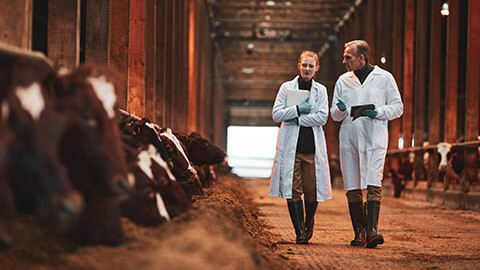We are now going to look at the role communication plays in the animal care workplace. It is important to be aware, that in these settings, extra care needs to be considered as they can sometimes be quite emotional and stressful situations for the patient and the family. You will need to be mindful of how you address those seeking care for their animals and offer a level of support that keeps all involved as calm and supported as possible.

Stakeholders are people who are either affiliated or involved with an organisation. Stakeholders can include:
- employees
- supervisors / managers (internal staff)
- clients (external).
Throughout your work, you will communicate to a wide range of stakeholders within your organisation and outside. By identifying the type of stakeholder, you will then be able to cater your communication to suit for example, If a client has their pet booked in for surgery for the coming day, your clinic may have a certain procedure such as sending reminder SMS the day before, confirming the surgery. A phone call and email may also be issued if there are specific details the patient needs to know prior to surgery, for example, their pet may need to fast 12 hours before the surgery takes place.
Identifying stakeholders
The way stakeholders are identified for their relevance, is usually carried out through your orientation (when you meet your employees and or make your first contacts with clients). You may also become acquainted through any other on the job training or through communication from staff, supervisors and/or managers.
The following diagram illustrates the scope of stakeholders at Noah’s Ark Veterinary clinic:
Work tasks are the roles and responsibilities each employee is required to perform in their job. If an employee is unclear of their tasks, they can access their job description through their staff handout/ induction or complete further on the job training.
There are various factors which impact the work tasks. Some of these include:
Timing
This could depend on the time of day, month, or year. It could also contribute to productivity and demand of the company.
The role within the organisation
Smaller organisations may require an employee to take on a wider scope of roles while in bigger organisations, roles may be specific to each set department. This means each employee would only be responsible for the tasks which are more relevant and focussed to them and limits time on duties which may be administrative or irrelevant.
The type of industry
The type of industry would also change your work tasks e.g. Your tasks would be slightly different if you were working at a veterinary clinic versus working at an animal shelter.
The type of workplace
Each workplace has a unique approach to the way that tasks are completed which is why there is an orientation/induction process which occurs at the commencement of employment. It could be that the steps for handling/ restraining a pet may be slightly different or that the recommended medications for pets are a totally different brand to what you are used to seeing on the counters. It may take some time to change your ways if you have been at a previous workplace for a lengthy amount of time, but it is important to follow the policies and procedures of the workplace you work at to ensure you are abiding to the same rules which apply to everyone else.
